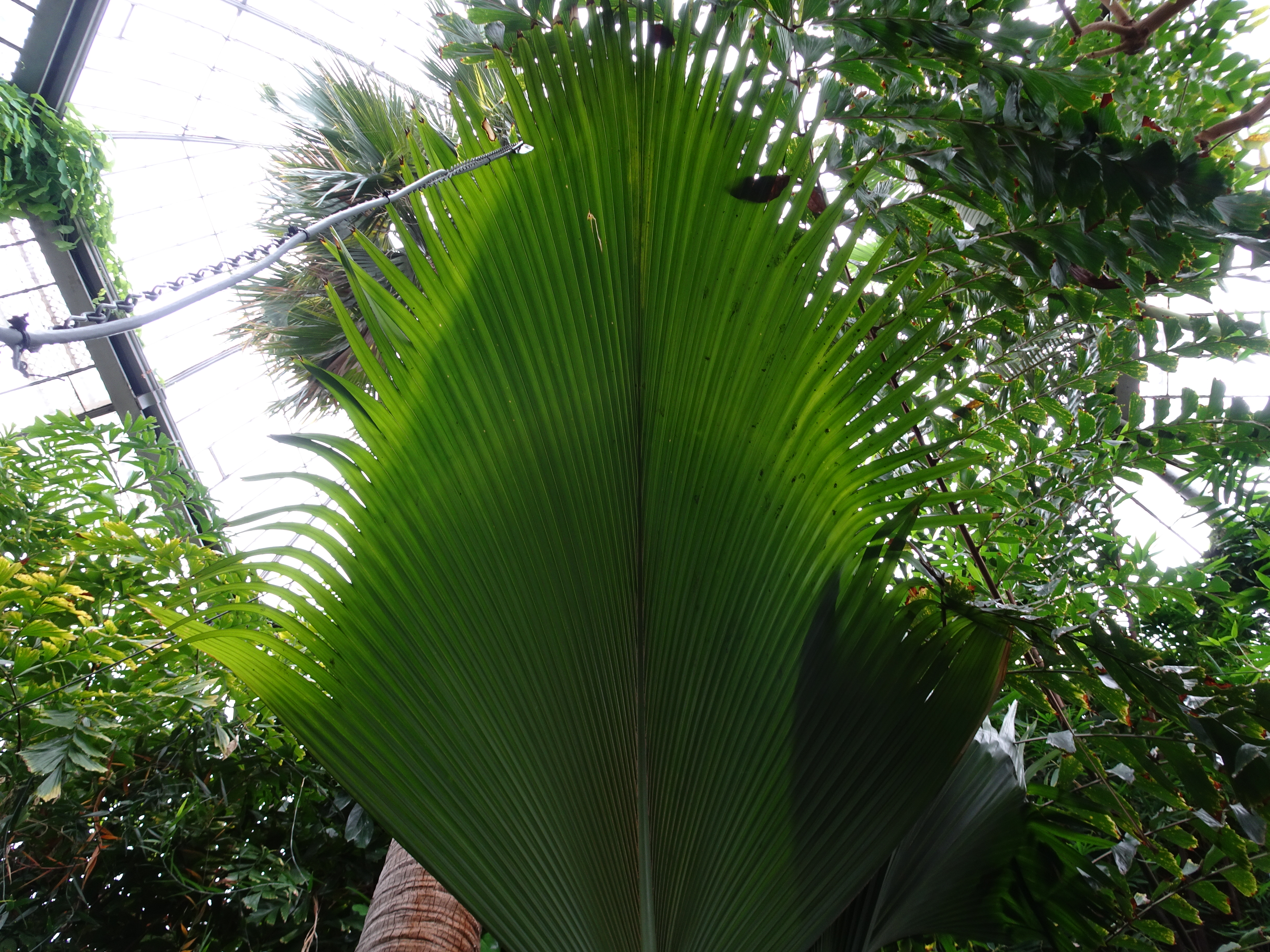 Threatened plants of the world
Threatened plants of the world
Red List status: ENDANGERED
Far off the coast of east Africa the Seychelles are tiny specks of green in the vast Indian Ocean. Among many wonderful plants and animals unique to these islands, perhaps the most remarkable is the magnificent palm Lodoicea maldivica, also known as the Coco de Mer.
The Coco de Mer is a towering tree that can grow up to thirty metres tall. The massive leaves are ten metres long and four and a half metres wide – imagine fanning yourself with one! If you take a closer look at these stiff leaves, do you notice how they are held upright and slightly folded? Do you also see the deep groove that runs down along the center of the leaf? This form allows the leaf to act as a giant funnel, catching and channeling water and nutrients down the truck to the roots below. This clever adaptation ensures that these huge plants are able to grow up healthy and strong.
The Coco de Mer is perhaps best known for its large seeds shaped like a plump behind. These seeds are the largest and heaviest in the world and since they are so big, they take six or seven years to ripen on the mother tree. It’s like waiting seven years for an apple to ripen. Once they mature and fall off it takes a further two years before they are able to grow into a new tree. Finally, it takes twenty-five years before young trees are mature enough to bloom and produce their own seeds. A long reproductive cycle can be a problem when species are under threat.
As Coco de Mer seeds are too heavy to float they are only found wild on two small islands in the Seychelles. This limited distribution makes the Coco de Mer vulnerable. People have reduced the habitat of this palm by clearing land for other uses, and competition from non-native species is responsible for further losses. Collection of the very bizarre seeds is also a problem. Research supported by the Seychelles government is being conducted to try to conserve this remarkable palm.

1 Comment
1 Pingback